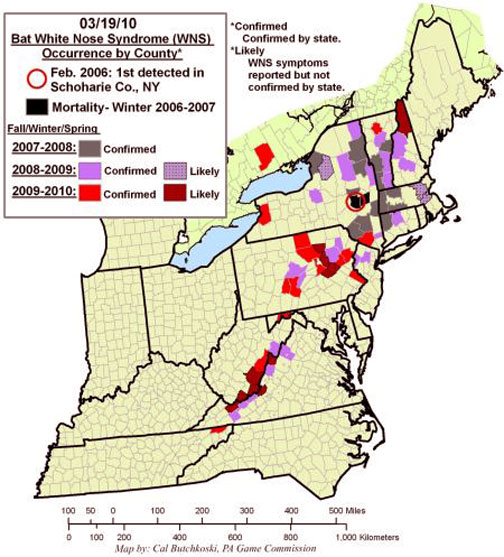“These bats have been around for some 50 million years and have been able to adapt very well to their natural conditions. And in a very short span under our watch, they are disappearing from our forests and ecosystems.”
- Scott Darling, Vermont Wildlife Biologist

March 25, 2010 Louisville, Kentucky - A week ago in Louisville, Kentucky, the federal Fish and Wildlife Service held a meeting with federal and state biologists March 15-19, to work on a national implementation plan for white-nose syndrome that continues to kill hibernating bats in huge numbers. In some bat hibernation sites this winter, 99% of the bats are dead! One site is the Graphite Mine in New York’s Adirondacks. This once had the largest count of Little Brown Bats in North America – about 200,000 animals. But recently, the count is down to only 2,000.
Click here to subscribe and get instant access to read this report.
Click here to check your existing subscription status.
Existing members, login below:
© 1998 - 2024 by Linda Moulton Howe.
All Rights Reserved.

